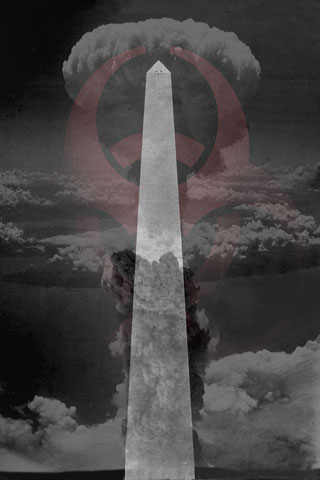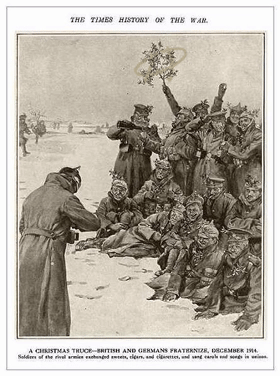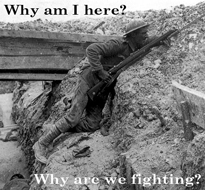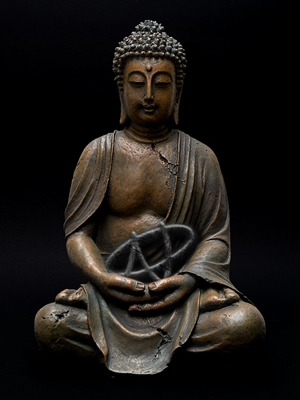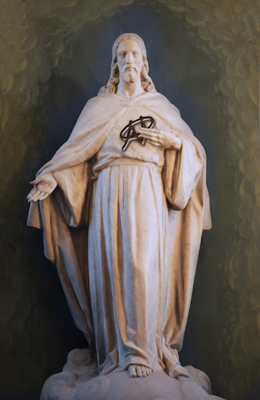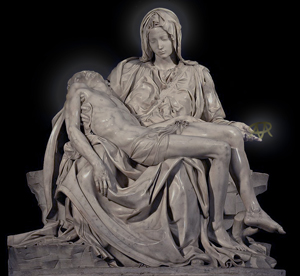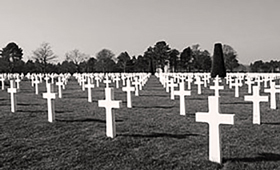Beginner's Guide to Peace - Going Off Road
“Not all those who wander are lost.” - J.R.R. Tolkien, The Fellowship of the Ring
“Do not go where the path may lead; go instead where there is no path and leave a trail.” - Ralph Waldo Emerson
“If you can’t change your mind, you can’t change anything” – George Bernard Shaw
Going Rogue – Escaping the Mythos
NOTE: The following discussion of religion and the Non-Aggression Principle makes no metaphysical claims regarding the ultimate existence or nonexistence of any deity or deities. It does take a very critical view, however, of a number of dogmatic claims that are illogical, self-contradictory and\or in violation of the NAP.
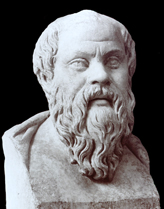
Is a behavior moral because the gods command it or do the gods command it because it is moral? This was a question debated by the ancient Greeks. Many people still believe that religion is required for people to act morally, yet it seems obvious that unprovoked acts of aggression such as murder or rape are detestable whether a deity says so or not. Equally obvious there are some practices, such as misogyny, slavery, warfare and human sacrifice, that have been claimed as commands from a deity at some time in the past that are undeniably deplorable and vile. Unfortunately many cultures, under the justification of religious tradition, continue to allow or even embrace practices such as these and others.
The State Religion
On this journey of peace we have noted that libertarians as a group are generally very critical of the State and its unjustified use of aggression and violence. It should not be surprising, then, to find that many libertarians are also critical of religious practices that violate the Non-Aggression Principle.
For millennia, the State and religion have been intimately linked, from ancient civilizations in Egypt and China to those of the Aztecs, Inca and others. In almost every case, religion was used to justify the actions of the State and the State was used by religion for its protection and sustenance.
This practice did not end with the ancients, however, as the link between the State and religion has continued into modern times. The “divine right” of kings, for example, was used to justify the reign of monarchs in Europe, while “manifest destiny” and the “saving of souls” were used to justify the violence of empires from the Spanish in the 15th century to the United States in the 19th and 20th centuries.
More Cultural Hijackings
While there are many cases where it is difficult to discern how the link between the State and religion originated, in some cases it is abundantly clear. There are times when the State intentionally hijacks cultural institutions such as religion in order to gain support for its policies and to use as a tool in its pursuit of power. In doing so it often corrupts the very heart of these traditions.
Not long after Zen Buddhism was introduced to Japan in the 12th century, certain elements of it were adopted by the samurai warrior class. They found the practice of finding inner calm to be particularly useful in preparation for battle and in the execution of skills such as archery. The tenant of selflessness and the belief in the impermanence of all material bodies made it easier to train warriors to overcome their fear of death while the concept of karma made it easier for them to justify the murder of others. The Buddhist concept of compassion for all life and the precept to refrain from the killing of any living being were conveniently ignored.

Having been corrupted, the embrace of warfare by some schools of Zen in Japan continued for centuries and into World War II, though many practitioners tried to hide this fact after that war. The publication of the book "Zen at War" by Brian Baizen Victoria in 1997, however, made it impossible to deny the complicity of some Zen Buddhist schools in supporting the state of Japan and its imperial war. Even the late D.T. Suzuki, one of the most beloved popularizers of Zen Buddhism in the West, once made the unfortunate quote that “religion should, first of all, seek to preserve the existence of the state.”
Another example of religious hijacking, centuries earlier, is the adoption of Christianity by the Roman Empire beginning with Emperor Constantine in the early 4th century. In the Battle of Milvian Bridge, after reportedly seeing a vision of a cross in the sky, Constantine famously ordered that the cross be adorned on all soldier’s shields. Whether Constantine’s conversion was genuine or whether he was catering to the popularity of Christianity among soldiers at that time can certainly be debated. The ability to use the belief in an afterlife to lessen his soldiers’ fear of death was certainly useful.
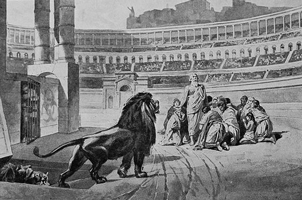
Ironically, after centuries of persecution, the Roman Empire had begun to embrace, at least superficially, certain elements of the Christian religion. As with Zen Buddhism in Japan, the more noble elements of the Christian religion were disregarded. Instead of focusing on Jesus’s blessing of the peace makers and the call to love thy neighbor, the Roman emperors seemed more interested in embracing some of the more barbaric practices of the Old Testament.
Perhaps even more ironic was the adoption of the cross as the symbol for Christianity. Rarely used before the fifth century, the crucifix, the cruel instrument of execution generally reserved by the Romans for those who challenged the State and the very instrument of death used against its founder, eventually became the symbol of Christianity for hundreds of millions of followers.
The State Destroys Religion with its Embrace
Over the centuries, the religion of the Prince of Peace spread throughout Europe and across much of the globe. Unfortunately the words of Jesus seemed to mean little to the State as nominally Christian nations engaged in dozens of bloody wars against each other over the course of many centuries.
A Glimmer of Hope
Despite this long history of horror and carnage, at the start of the First World War there was a tiny ray of hope that Christian love and charity could challenge the destructive force of the State. On Christmas Eve, 1914, in the first year of the so-called Great War, a temporary truce was called by German, British, French and Belgium forces on the front lines at a number of locations. Meeting in the no-man's land between the trenches, some of the men from opposing sides exchanged small gifts and pleasantries. The truce continued into Christmas day as men from opposing sides fraternized and perhaps even engaged in football (soccer) games at several places.
At some locations, the truce continued for days afterwards as soldiers on both sides, having experienced the humanity of their so-called enemies, were reluctant to resume the slaughter.
Unfortunately the power of the State proved preeminent. Soldiers at the front that refused to fight were removed and fresh troops were brought in and prodded to shoot. The carnage resumed and another generation was consumed as the lives of 17 million soldiers and civilians were destroyed.
Trapped by Culture
Pushing the boundaries and moving a culture into a new direction can be extremely difficult. Both Siddhartha Gautama, the man who became known as the Buddha, and Jesus of Nazareth, who became known as Christ, the Anointed One, were men of their times and cultural environments. While both pushed their traditions towards a more humane system of morality, they were both constrained by what was known of the world and by what was considered possible within their own cultures.
The Buddha
Siddhartha Gautama was raised in a Hindu culture that believed in reincarnation, the endless cycle of birth and rebirth, and karma, the belief that the situation every being is born into is based on their actions in previous lives.
As the tradition goes, Siddhartha, having lived a sheltered life as a prince, was shocked by the reality of aging, disease and death he discovered upon his escape from the palace grounds. Greatly disturbed and moved by the suffering he saw all around him, Siddhartha at first tried to find peace by following traditional practices of his culture such of asceticism and yogic mediation. Ultimately dissatisfied with the extremes of hedonistic luxury and self-denial, Siddhartha finally experienced an Enlightenment that provided the answers he sought. Establishing a moral system that called for a Middle Way between extremes of behavior and an Eightfold Path of right speech, right livelihood and other appropriate behaviors, the Buddha, or Enlightened One, hoped that his plan would lead to Nirvana, the extinguishing of greed, hatred, and delusion and, on death, the end of the cycle of rebirth.
While millions of peoples have taken comfort in the teachings of Buddhism and have perhaps indeed escaped from much of life’s suffering, the Buddha himself was not able to escape from his culture’s traditions of karma and reincarnation. Whatever the truth of reincarnation, the idea of karma continues to be used to justify institutionalized discrimination and stagnant opportunities within Buddhists and Hindu cultures.
Jesus Christ
For Jesus, the Anointed One, understanding and teaching the essence and true purpose of the religious laws of his time seemed to be a central task. “The sabbath was made for man, not man for the sabbath”, he is quoted as saying. Questioning the necessity of the countless laws and rituals regarding food, Jesus stated “It is not what you put into your body that makes you unclean but what comes out of it by your actions.” Questioning the unfair treatment of outsiders, Jesus provided the parable of the Good Samaritan. Challenging the alleged piety of the Pharisees, Jesus suggested that the poor who gave of the little that had were truer practitioners of religious devotion.
In the New Testament, Jesus beautifully tries to encapsulate the essence of moral teaching in the Golden Rule. As a Jew, Jesus was attempting to build on the best elements of the Pentateuch and other Judaic writings. The collection of these writings is known by Christians today as the Old Testament.
Unfortunately, there are elements of the Old Testament that are morally questionable, if not downright repugnant. Within the supposedly sacred writings of the Old Testament we find passages supporting slavery, misogyny, collective punishment and the punishment of children for the actions of distant ancestors. The call to stone a man for gathering sticks on the Sabbath and the requirement for blood sacrifices seem absolutely barbaric to modern ears, while the support for genocidal war is particularly hideous. Even the call to use physical punishment on children as a “child rearing” technique is indefensible in this modern day.
Whether Jesus was attempting to build on existing cultural traditions (“I have not come to do away with the law but to fulfill it”) or whether he was trying to create a radically new ethical code from scratch (“Do not put new wine in old bottles”) is a topic that is still hotly debated among Christians to this day. Thus we find denominations such as the Society of Friends and the Mennonites steadfastly opposed to war while many fundamentalist Christian churches, drawing more from the Old Testament, adamantly support war, and the institution of the State, as a necessary evil.
For those familiar with the bible, it is difficult not to notice the moral contradictions between the Old Testament and the teachings of Jesus. Just as the Buddha was unable to move beyond his culture’s belief in karma and reincarnation, Christianity seems tied to some of the worst practices and beliefs of the ancient Hebrews.
For those Christians who embrace the State and the “necessary evil” of war, they should note the Biblical passages regarding the three temptations of Jesus. After Jesus had spent 40 days in the wilderness fasting and preparing for his ministry, Satan tries three times to corrupt him. Among his temptations there was this (Luke 4:5-7):
The devil led him up to a high place and showed him in an instant all the kingdoms of the world. And he said to him, “I will give you all their authority and splendor; it has been given to me, and I can give it to anyone I want to. If you worship me, it will all be yours."
Death by State
In his time Jesus was pushing the boundaries of Judaic tradition and, because of his popularity, was likely seen as a potential threat to the Roman rule of Judea as well. Whether the Pharisees worked with the occupying forces to rid themselves of the trouble-making Jesus or whether the Romans “acted alone”, the end result was the same: an innocent man was unjustly found guilty, then cruelly tortured and brutally executed. Witnessing this horror was his mother Mary, feeling at the center of her being every blow and scourge, powerless against the State to save the life of her beloved son.
Sacrifice Without End
Many Christians believe that Jesus was the final blood sacrifice needed to restore moral balance to the world. The State begs to differ. In its unquenchable thirst for blood and lust for power it continues to sacrifice tens of thousands and at times millions of lives each year to the false gods of nationalism, collectivism and democracy. It seeks to destroy the individual, the family and any group or community that challenges its power.
The State is not something to be honored or worshipped, whether it be the State known as the Roman Empire or the current leviathan, the empire of the United States.
A Radical Decision
Within any culture, most people are quite comfortable to stay on its well tread paths and familiar roads, even when progress is slow. This is often a reasonable choice, especially when the alternatives are uncertain.
Sometimes, though, as mentioned in the previous chapter, a culture finds itself at a dead end. It is on these occasions that old ways must be abandoned and explorers must set out to discover new ways forward. Be forewarned, however, that for those determined to begin this journey it can be a difficult, lengthy and sometimes lonely trek with no guarantee of success. To revise or even abandon the existing cultural map and to blaze a new path requires a strong constitution and resilient mind. Just as there are bodies too fragile to attempt a steep mountain ascent, especially without extensive preparation and exercise, there are minds unprepared to handle the challenges of profoundly new ideas and discoveries.
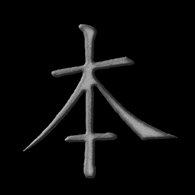
To move outside one’s cultural heritage may appear to be a drastic or even radical decision, but to be radical merely means to go to the root or foundation. With regard to culture, its purpose is to not just help people survive but to thrive. To oppose institutions such as slavery and war is to rediscover and reaffirm the essential function of culture and to restore its vitality.
There is no doubt that war in our present day is a dead end. It is no longer a tool of last resort to defend the homeland but is a cultural relic that has outlived its utility. War threatens humanity’s very existence.
Additionally, because war is the health of the State, any challenge to war is a challenge to the State’s survival. Push against the State hard enough and you may find yourself in exile, as did millions of citizens in the Soviet gulags, in prison, as did the followers of Gandhi and Martin Luther King Jr., or facing execution, as did Socrates, Jesus and unknown millions of others that refused to march in step with the State.
There and Back Again
One final note: When trying to push the boundaries of culture by entering new and unfamiliar territory, communication is essential. New discoveries are worthless to society if its explorers fail to return or send back a report. Find fellow travelers that share your goals, track your progress, and report missteps and dead ends. Work with a partner whenever possible. Be steadfast yet patient and, most importantly, stay in touch with loved ones you trust.
The myth of the lonely explorer or inventor is usually just that, a myth. Many of the world’s greatest accomplishments and innovations were the result of collaborations by two or more people or by individuals building on previous discoveries and inventions. Edmund Hillary did not make it to the top of Everest alone but had Tenzing Norgay by his side. Vincent Van Gogh, pushing impressionionism to colorful and energetic heights, had the emotional and financial support of his brother Theo. Steve Wozniak designed the first Apple computers with suggestions from Steve Jobs and together they assembled a team of top notch programmers, designers and engineers that eventually numbered in the thousands. Steve Jobs in fact said that his greatest achievement was assembling the Apple team.
Working together, we can accomplish things that no single person has yet to dream. It is time to join together to find a new path forward, to abandon the baggage of previous cultural failures and to travel lighter and freer into a future of peace, prosperity and humanity.
----------------------------------------------------
Essentials
-The entanglement of the State and religion often leads to the destortion of core religious values.
-Breaking with cultural traditions and institutions can be extremely difficult, even when they have become disfunctional or even deadly.
-To be radical means to return to the root or foundation.
Further Explorations
The Kingdom of God is Within You by Leo Tolstoy. Right from the start, Tolstoy explains why Christianity is incompatible with the State.
Christianity and War and Other Essays Against the Warfare State by Lawrence M. Vance. A strong and consistent voice against the State and the militarization of Christian churches, Lawrence Vance lays out the Christian case against war.
The Tao Te Ching by Lao Tsu. The Old Master lays down a richly dense work of 5,000 Chinese characters one afternoon on his way out of town, forever. I read it as being anarchic and strongly anti-war but others may have a different view. I have long enjoyed the black and white photos in the large format 1972 paperback translation by Gia-Fu Feng and Jane English, updated with additional photos in 2011.
Christmas Truce by Malcolm Brown and Shirley Seaton. There are several books available on the Christmas truce of 1914. I found this one to be particularly well done.
____________________________________________




